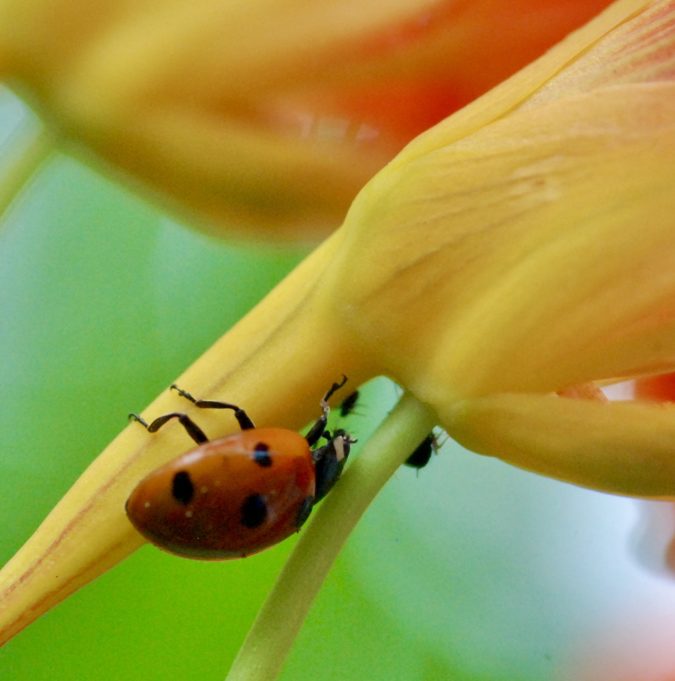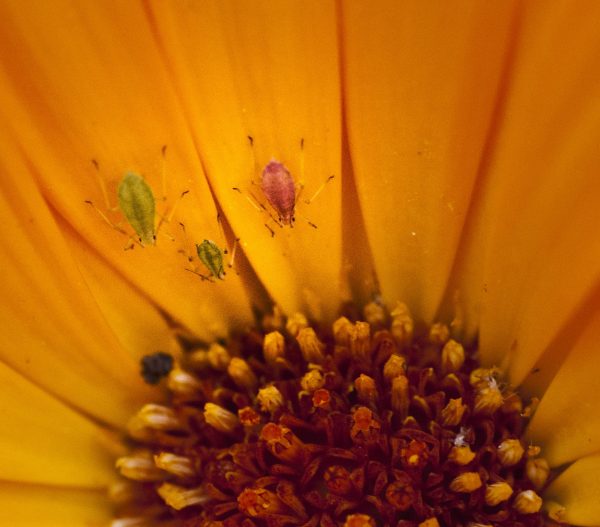Supporting ladybirds.

Ladybirds are to be encouraged (with the exception of the harlequin ladybird) as they help control pests such as aphids (greenfly and blackfly). Aphids ‘drain’ nutrient rich sap from host plants and also spread viruses with their piercing mouthparts. Some ladybirds add to their diet with nectar and as they sip nectar from flowers, they may also carry pollen from one flower to another. Like many other insects, species of native british ladybirds have declined in recent years, many outcompeted by the harlequin ladybird (which is an introduced species from Asia. Harlequins also harbour a fungus which can infect native ladybirds).

a ladybird 'stalking' aphids
Ladybirds are coccinellid beetles. They belong to the order – Coleoptera – and are characterised by having forewings modified to form hard wing covers (ELYTRA) and they have biting mouthparts (as compared to butterflies and moths, which have a proboscis*). Their wing covers are brightly coloured, and they serve as a warning to predators of their bitter taste. Ladybrds can also exude a pungent fluid to ward off ants, birds and people.
Recent work at Cornell University (and the Lost Ladybug Project) has suggested ways in which ladybirds might be encouraged in the garden. Strategies that might encourage ladybirds include :
- Growing plants that have hairs on their surfaces that offer some protection from predators,
- Plants that 'offer' food such as nectar , or prey (aphids). For example, aphids are often to be found on roses which frequently are home to aphids.
- Plants that give visual (or chemical) cues. More ladybirds were observed on the plants from the Umbellifer, Daisy and Rose families They seem to be drawn particularly to yellow flowers.

Aphids on yellow - beware!
* though some species such as the Humming-bird Hawk-moth have a 'tongue' which it uses to sip nectar
Comments are closed for this post.
